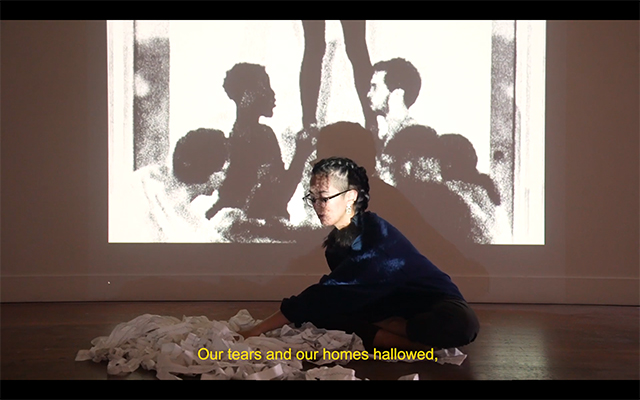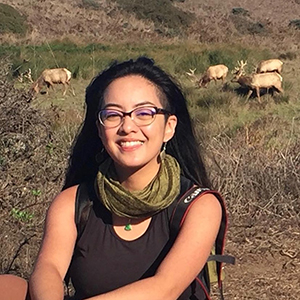
Angela Hien Buencamino Phung is an artist and educator currently based in Oakland, CA / Ohlone Land, and was born and raised in Sacramento / Nisenan Land. She completed her BA in Art Practice and Comparative Ethnic Studies from University of California Berkeley, and is now participating in the Secondary Education Teaching Credential Program in Social Science at San Francisco State University. She creates art through writing, installation, textile, performance and digital media.
Phung is currently Root Division’s Filipinx Teaching Artist Fellow. In large part, the commitment involves teaching classes one to two afternoons per week at Bessie Carmichael Elementary School and the Filipino Education Center (FEC) with Galing Bata, an after school program that serves both newcomer and US born children and families through bilingual, multicultural services and programs.
Working as a teaching-artist in residence for the full school year, Phung incorporates monthly themes from the BCE/ FEC cultural calendar into projects, which guide students in culturally relevant and responsive discussions, story-telling, and art-making activities.
Phung’s work is currently on view in the main gallery alongside her students as a part of New Growth 2021: Courage in Creativity, the annual Youth Art Exhibition featuring student artwork created in Root Division’s free after-school Youth Education Program.
Read more below to see Education Fellow Rebecca Sexton’s interview with Angela Hien Buencamino Phung about her experience as the Filipinx Teaching Artist Fellow, as well as her own artistic practice.

Rebecca Sexton(Education Fellow): How did you begin making art? Was art a large part of your life since childhood?
Angela Hien Buencamino Phung(Teaching Fellow): My Lolo would draw portraits of his grandchildren when we would visit him. He once sketched me and my gravity-defying jet black ponytail, with a ballpoint pen on the bottom half of a white takeout napkin. The memory has been blurred with age and time, and I honestly have no idea where my napkin-heirloom lives now. Though, most of my earliest memories involve art as cross-generational communication, in a very matter of fact way. Art is language, when there are no words, or too many words. The way my Lolo draws my eyes is the “I love you” that lives in between Tagalog and English.
RS: You play many different roles within your community. Some that come to mind are ethnic studies educator, art educator, and artist. How do these roles overlap for you personally? How do you see these roles overlapping within community spaces?
AP: I’m still navigating a lot of the nuance of these roles, in their complexities, responsibilities, and boundaries. Though, I can say that each of them demand authentic intergenerational listening and acting. To the ancestors, the self, the inner child, the elders, the students, the lovers, the comrades. This is central to the intra and interpersonal work to achieve environmental and social justice.
RS: How has your experience as the Filipinx Teaching Artist Fellow affected you? How has it influenced your own artistic practice?
AP: As the Pilipina Teaching Artist fellow, I taught weekly art lessons to the 3-5th graders and 6-8th graders of Galing Bata Pilipinx Education Center. Halfway through this year, I dropped my longwinded Slide decks and intricate project plans. The class sessions are now more play-based for my younger students, and heavily student driven with the middle schoolers. Together, we have used a variety of mediums, such as clay, digital drawing, pencils, paint, film photography. This was possible through the cooperation and support of Root Division, Galing Bata Staff and Families, and Underdog Film Lab. It is really amazing how the whole “village” has shown up to care for the youth. My ultimate hope for my students is that as they continue to flourish and grow, that with them grows their legacy of community based, multigenerational care. Teaching with this goal, sometimes it looks like having real talk with my middle schoolers, as their Ate. Sometimes, we are all quiet together. Drawing, sketching, chatting, sharing art at the end of our sessions. My elementary schoolers are some of the coolest, and most earnest studio-mates ever, haha. Learning, teaching, and growing never looks one specific way. Truth is expansive and complex! It’s been very humbling and transformative to hold a consistent space for my students, that is committed to truth and care.
